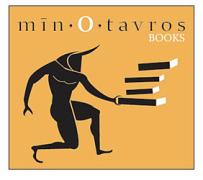The Morgan’s “Treasures from the Vault” Opens

HIGHLIGHTS
Despite its selling over thirty million copies today, The Hobbit was not an immediate success when it was first published in 1937. In a letter to his friend G. E. Selby, J. R. R. Tolkien describes—in his ornate handwriting—the genesis of his novel, joking that the manuscript “was discovered (in a nunnery).” Tolkien went on to say that his children, for whom he originally created the story, “do not wholly approve of their private amusements being turned to cash…[That was the hope. Actually I have ear[n]ed ??25 so far…].”
Opera grew out of the desire to recreate the way in which Greek tragedy was declaimed. On display is Jacopo Peri’sEuridice, the earliest opera to have survived with all its music. The work, composed for the celebration of the marriage of Maria de’ Medici and King Henry IV of France, dates to 1600.
One year following Tolkien’s letter, in 1938, John Steinbecklamented the state of his current project—the draft of The Grapes of Wrath. Writing to his friend, the filmmaker Pare Lorentz, Steinbeck admitted getting “pretty low about this book sometimes. It just seems lousy,” before concluding, “I do hope this god damn book is some good. It’s been hard enough work.”
In The Yellow Wall Paper, Charlotte Gilman dramatized the dangers of “restorative” confinement, the cover’s bold printed pattern and grotesque color scheme alluding to the heroine’s afflicted mental state. Gilman’s novel appeared in a decade when eye-catching dust jackets and bindings became selling points for many books, their covers essentially acting as their own advertisements.
On October 17, 1781 General George Washington received a letter from Lord Cornwallis that would effectively end the Revolutionary War. In it, Cornwallis proposed “a cessation of hostilities for twenty four hours” in order “to settle terms for the surrender of the posts of York & Gloucester.” The absolute surrender of Yorktown took place two days later, marking the culmination of the Yorktown campaign and the last major land battle of the War.
A magnificent twelfth-century illuminated manuscript on display depicts the life, passion, and miracles of St. Edmund, who was crowned king of East Anglia before being tortured and ultimately decapitated by the Danes in 870. The manuscript’s thirty-two illustrations are executed in the distinct Romanesque style characterized by attenuated figures and two-dimensional space.
Pierpont Morgan was not an avid music collector, but he was always on the look-out for amazing finds. When Morgan was alerted to book dealer Leo Olschki’s acquisition of Beethoven’s long-lost tenth, and last, violin and piano sonata manuscript,he seized the opportunity and purchased the score.Edward Curtis’s The North American Indian, one of the most ambitious ethnographic and photographic projects of modern American publishing, was financed in part by Pierpont Morgan and his son. For more than a quarter century, Curtis studied, photographed, and recorded the languages, history, and customs of native North Americans. The pages on view represent a fraction of Curtis’s final output of twenty volumes of texts and twenty portfolios of photogravures.
COMPLETE WORKS ON VIEW
AMERICANA
Conrad Beissel’s Paradisisches Wunder-Spiel, 1754
Charles Cornwallis’s letter to George Washington, October 17, 1781
Edward S. Curtis’s The North American Indian, 1907-1930
Alexander Hamilton’s letter to Martha Washington upon the death of her husband, January 12, 1800
Jean Antoine Houdon’s George Washington's Life Mask, 1785
ILLUMINATED MANUSCRIPTS
Book of Hours, in Latin, ca. 1530-35
Gospel Lectionary, in Latin, 1070-90
Hours of Hawisia DuBois, in Latin and French, ca. 1325-30
Life, Passion, and Miracles of St. Edmund, in Latin, ca. 1130
Lindau Gospels, 880 and 899
St. Cyril of Jerusalem (?), Homily Delivered on Wednesday After Easter, in Coptic, 822-914
LITERARY AND HISTORICAL MANUSCRIPTS
Ludovico Buonarroti’s letter to his son, Michelangelo Buonarroti, November 5, 1516
Niccolò Machiavelli’s letter to the government of Florence, July 9, 1499
Percy Bysshe Shelley’s On Life manuscript, 1819
John Steinbeck’s letter to Pare Lorentz, October 17, 1938
J. R. R. Tolkien’s letter to G. E. Selby, December 14, 1937
Virginia Woolf’s letter to E. McKnight Kauffer, April 23, 1931
MUSIC
Ludwig van Beethoven, Violin and Piano Sonata, op. 96 in G major manuscript, 1815
Wolfgang Amadeus Mozart’s “Non so più cosa son” from Le nozze di Figaro, 1786 (?)
Jacopo Peri’s Euridice, 1600
Giacomo Puccini’s Le Villi manuscript, 1883
Giuseppe Verdi’s “Odi il voto, o grande Iddio” manuscript, 1844
Richard Wagner’s Der Ring des Nibelungen, 1853
PRINTED BOOKS
Anthologia Graeca Planudea, August 11, 1494
Ars memorandi (The Art of Memory), ca. 1470
Johann Amos Comenius’s Orbis sensualium pictus, 1658
Charlotte Perkins Gilman’s The Yellow Wall Paper, 1899
Hore Beate Virginis Marie secundum usum Sarum, ca. 1520
Alexander Pope’s The Rape of the Lock, 1714
















